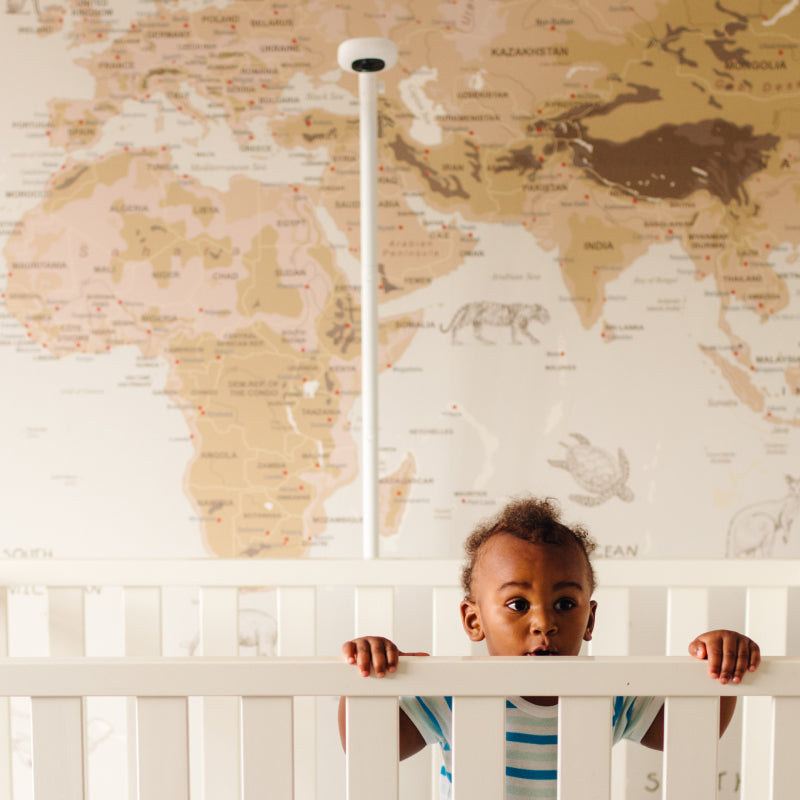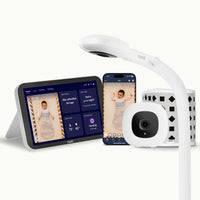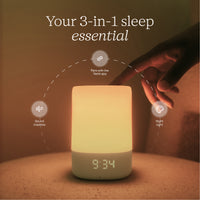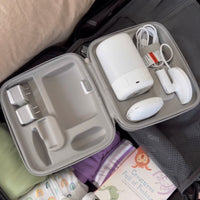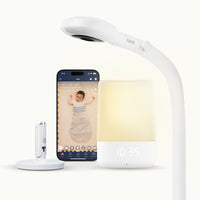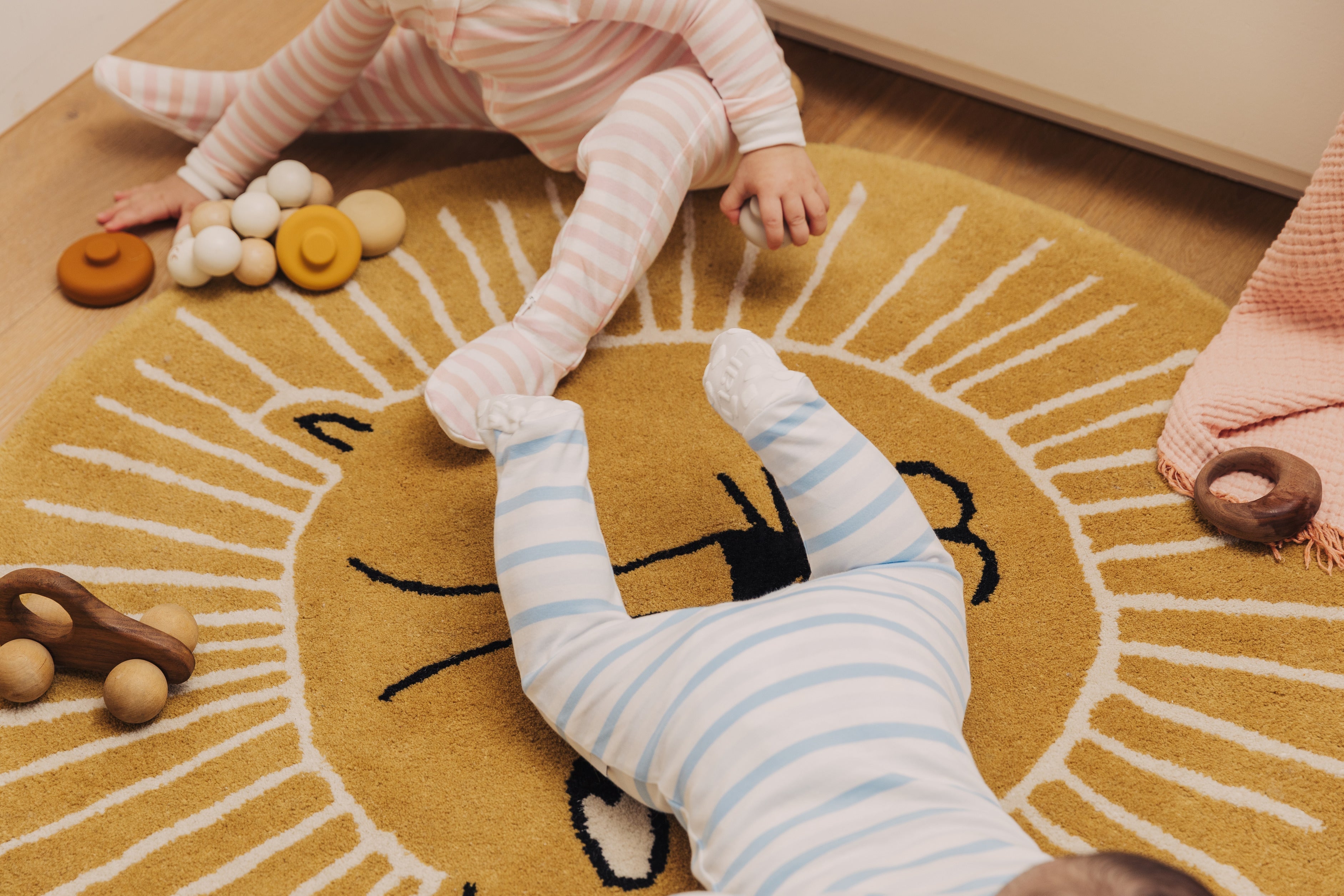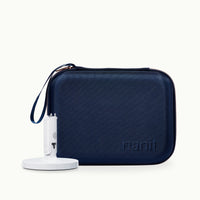Finding out that you’re pregnant with twins can mean twice the excitement—and perhaps twice the trepidation, too. Families expecting twins (or more!) may wonder how their pregnancy journey may change with multiples on the way.
But expecting twins doesn’t have to mean double the anxiety. Here’s what to expect with twins during pregnancy, from the science behind multiple babies to ways you can manage twice as much feeding, bonding, and sleeping.
The science of twins: How do multiples happen?
If you’re expecting twins, congratulations—multiple births are still somewhat rare. In 2021, the CDC recorded about 32 live twin births for every 1,000 babies born. That’s only about 3.2 percent of pregnancies.
There are two types of twins:
- Identical twins. This happens when a single egg splits into two. These babies share the same DNA and are born with the same biological sex. Having identical twins is especially rare: globally, only three or four out of 1,000 births result in identical twins.
- Fraternal twins. The more common type of twin pregnancy—fraternal twins—occurs when two eggs are simultaneously released and fertilized by two individual sperm. Unlike identical twins, fraternal twins have their own unique DNA, and they can be a combination of biological sexes (two males, two females, or a male and a female).
Multiple births are still a bit of a mystery. While genetics may play a role, the more common explanation is the release of multiple eggs into the uterus due to hormone fluctuations. These kinds of hormone surges can happen for a few reasons:
- Age. Pregnant women in their 30s and 40s are more likely to produce multiple births. As a woman reaches pre-menopause, her ovulation becomes more irregular than in her teens and 20s, sometimes causing her body to release more eggs into the uterus at once.
- Assisted pregnancies. Twins are also more likely if you’re attempting an assisted pregnancy either through IVF or IUI. This isn’t necessarily because of the actual IVF or IUI procedure, but because of the medications—Clomiphene citrate (Clomid) and letrozole (Femara) in particular—used to help stimulate ovulation.
Physical changes during twin pregnancy
So, what to expect when pregnant with twins? Every pregnancy is unique, and pregnancy symptoms can vary from person to person. However, a few symptoms tend to present more often when you’re expecting twins:
- Increased morning sickness. An uptick in pregnancy hormones can cause some people pregnant with multiples to feel more nauseous at the beginning of their pregnancy, or nauseous for longer into their pregnancy.
- More weight gain. More babies mean more mouths to feed, including when you’re pregnant. Doctors recommend that people pregnant with twins gain between 37 and 54 pounds when carrying twins—so remember that gaining a little more weight is completely normal.
- Early delivery. It is common for twin pregnancies to end in preterm labor—in fact, twins are nearly six times more likely to be born early than single babies. In some cases, doctors schedule an earlier delivery because twin pregnancies may face more complications.
Preparing for the arrival of twins
Setting up your nursery can be one of the most exciting parts of pregnancy. But when you’re expecting multiples, your nursery may start to look a tad small. Here are three easy tips on how to prepare for twins without cluttering up your babies’ room.
One set of furniture is fine.
People often wonder if twins can share a crib, but the short answer is no. It may seem natural to double everything when you’re having twins, including the furniture in the nursery. But there’s no need to give each twin their own changing table, dresser, or rocking chair. Instead, get creative with organizers to keep clothes, bibs, and other accessories separate.
Double up on bottles, bouncers, and other essentials.
Other equipment, however, will need to be doubled up on. For starters, plan to buy (or register for) a double supply of pacifiers, bottles, bouncers or swings, and high chairs. A double stroller is another must-have, so that the whole family can enjoy walks together.
Step up your baby monitor system.
Keep an eye on both babies at once with our Nanit Smart Baby Monitor Multi-Pack. A state-of-the-art baby monitor system, our Multi-Pack includes two cameras for twice the insights, as well as a split-screen capability in the Nanit app.
Managing emotions during twin pregnancy
Like any pregnancy, expecting twins or any other multiples can bring up a variety of feelings. You may experience anxiety, excitement, overwhelm, or stress. Strong emotions are completely normal; try your best to treat yourself and your growing babies with compassion.
There are a few simple ways to cope with all the big feelings when they arise, whether during pregnancy or after the babies are born:
- Lean on others. It takes a village to raise a child, and that’s extra true when you’re expecting twins. Ask for help when you need it, whether that’s more hands to hold, change, and feed your twins or someone to take care of everyday tasks like cleaning and cooking.
- Take a nap. When you’re rested you’ll be able to be more responsive and attentive to your babies’ needs. Even a 15-minute catnap while a partner or relative watches the kids can make a world of difference.
- Stay in touch with your doctor. People expecting multiples often need to see their doctors more frequently than they would with a single baby, and may require more after-birth medical care as well. Take the time to build a team of medical professionals whom you trust.
Tips for parenting twins
Life might feel a bit more hectic after your twins are born, but you also have twice the cuddling, bonding, and loving to look forward to.
One of the best things to do in the early stages with twins is to synchronize their feedings, changing, sleeping, and playtime as best as you can. A schedule can make it easier to streamline your process and give you the downtime you need.
Get the hang of double feeding and sleeping
As you synchronize your babies’ schedules, the same feeding time will be an essential part. It is possible to feed two babies at once—it just takes some practice, and can be made easier with a partner, co-parent, and/or a few infant seats.
When it comes to sleeping, be sure to follow the safety advice from your pediatrician. It’s generally recommended that multiples have separate sleeping spaces.
Keep track of each baby
Whether your infants are identical or not, it can sometimes be hard to tell your babies apart. Save yourself stress by creating a system to identify which baby is which. Pick a color for each baby, for example, or even paint a toenail a specific color to help distinguish one twin from the other.
Tracking your babies’ individual feedings, changings, naps, and other logistics can also help you synchronize your twins to a single schedule, or identify when a schedule isn’t working anymore.
Understand your twins as individuals
Though they may look alike (or even be identical), twin babies have unique characteristics all their own. Even their sleep patterns can be different from one another.
A dual baby monitor system can help you observe each baby, so you can make informed decisions about what they need to thrive. Nanit’s baby monitor is backed by science and personalized data that informs you about your children’s sleep habits.
Cutting-edge technology helps you deepen connections with your babies through a broader understanding of their needs. At Nanit, we create gear designed to support development and comfort, an app to track and synthesize data, and a library of research by experts to help you make the best decisions for your little ones.
You may be flooded with excitement and nerves when you realize there are two heartbeats on the ultrasound instead of one. And with a little strategizing, bringing twins into your life can be double the firsts and double the joy.
Key takeaways
- Twin pregnancies are unique. Multiple babies only happen when multiple eggs are released and fertilized, which isn’t often: only 32 out of 1000 births. Chances of twins increase based on a mother’s age and whether you’re using ovulation-inducing medications to assist with fertility. Once you know you’re having twins, research what that could mean for your birth plan, health, and preparations.
- Double up on some, but not all things. You’ll need to buy two sets of cribs, diapers, wipes, and car seats before your twins arrive. But other things, like rockers for the nursery and even some toys, can be easily shared. Invest in a baby monitoring system that allows you to track each baby.
- Consider a schedule for your babies. Synchronizing your twins to a single schedule (as best you can) can give you the much-needed downtime you deserve to rest between feedings, naps, changings, and playtime. A baby monitor system like Nanit can help by collecting real-time data on your babies’ sleep habits, which you can use as a foundation for creating a schedule that works for the whole family.
Sources:
CDC. Multiple Births. https://www.cdc.gov/nchs/fastats/multiple.htm
Mayo Clinic. Pregnancy week by week. https://www.mayoclinic.org/healthy-lifestyle/pregnancy-week-by-week/in-depth/twin-pregnancy/art-20048161
WebMD. Do Twins Run in Families? What to Know About the Heredity of Twins. https://www.webmd.com/parenting/do-twins-run-in-families-what-to-know-heredity-twins
WebMD. 11 Things You Didn't Know About Twin Pregnancies. https://www.webmd.com/baby/features/11-things-you-didnt-know-about-twin-pregnancies
Healthline. Seeing Double: How to Increase Your Chances of Having Twins. https://www.healthline.com/health/pregnancy/chances-of-having-twins#increasing-the-odds
Journal of perinatal medicine. First trimester. β-hCG and estradiol levels in singleton and twin pregnancies after assisted reproduction. https://pubmed.ncbi.nlm.nih.gov/28753549/
Healthline. Having Twins? Here’s What You Need to Know. https://www.healthline.com/health/pregnancy/having-twins-what-to-expect#Pregnancy
Very Well Family. Signs of Preterm Labor in a Pregnancy With Twins or Multiples. https://www.verywellfamily.com/preterm-labor-in-pregnancy-with-twins-or-more-2447288
Very Well Family. 10 Tips for Planning a Twin Nursery. https://www.verywellfamily.com/tips-for-planning-a-twin-nursery-4119609
The Bump. Your Baby Registry Guide for Twins and Triplets. https://www.thebump.com/a/baby-registry-must-haves-twins-triplets
Very Well Family. What Kind of Help to Consider If You're Going to Have Newborn Twins. https://www.verywellfamily.com/help-for-newborn-twins-2447438
Very Well Family. How to Stay Healthy During a Twin Pregnancy. https://www.verywellfamily.com/ways-to-have-a-healthy-twin-pregnancy-2759469
Very Well Family. How to Get Your Twins on a Schedule. https://www.verywellfamily.com/how-to-get-your-twins-on-a-schedule-2447433
Twin Trust. Bottle feeding. https://twinstrust.org/information/parenting/feeding/bottle-feeding.html
Twins Trust. Safe sleep guidance for twins, triplets and more. https://twinstrust.org/information/parenting/sleep/safe-sleep-guidance-for-twins-triplets-and-more.html





